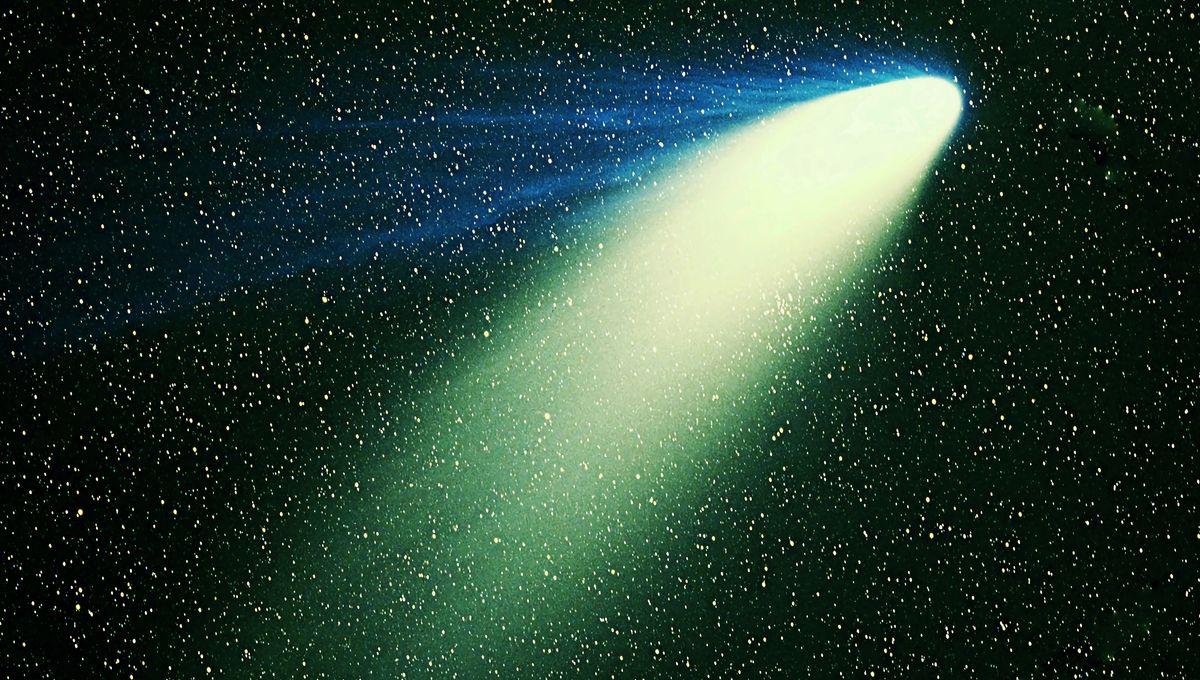When 3I/ATLAS was first spotted a few months ago, it seemed to emit a reddish color. But earlier this month, some astronomers noted it was glowing green. So why is our latest interstellar visitor appearing to switch colors like a traffic light? The answer isn’t certain, but it has something to do with cosmic chemistry.
The rest of this article is behind a paywall. Please sign in or subscribe to access the full content. First observed in early July 2025, 3I/ATLAS is a giant interstellar object that’s currently blasting through our Solar System. And sorry, folks, but NASA says it’s not an advanced alien spacecraft. It’s an active comet consisting of a solid icy nucleus surrounded by a haze (known as a coma) of gas and ice. It’s particularly exciting because it’s only the third time we have directly observed an object from another star pass through our Solar System, after ʻOumuamua and Comet 2I/Borisov. A bunch of observations in July suggested that 3I/ATLAS possessed a red coma, but that changed over the following weeks. On September 7, amateur astrophotographers Michael Jäger and Gerald Rhemann snapped up some images of 3I/ATLAS during the "blood Moon" total lunar eclipse in Namibia. To their surprise, the object appeared green with a blue-ish tinge. "Our images show a gas-rich coma of 2 arcminutes for the first time. It was clearly visible in both the blue and green filters,” Jäger told SpaceWeather.com. ⓘ IFLScience is not responsible for content shared from external sites. It’s not totally unusual for comets to have a green glow. The color is typically associated with molecules of diatomic carbon (C2) in their coma when they absorb ultraviolet sunlight, causing a reaction that emits green light. However, this doesn’t quite explain why 3I/ATLAS possessed an emerald tinge. Some previous observations have indicated the object is “among the most carbon-chain depleted comets known”, suggesting it would not be rich in C2. This hints that the emerald hue is likely the result of some other, yet-to-be-identified chemical processes within its coma. Harvard professor Avi Loeb, who is notorious for claiming evidence of alien life/technology in many astronomical features, has argued that the color change from red to green may be “associated with the steep rise in the production of cyanide”, which was observed in the coma by the European Southern Observatory's Very Large Telescope on August 25. Aside from its coloration, 3I/ATLAS has several features that are fascinating to scientists. Another recent paper by Loeb, as well as his Harvard colleagues Richard Cloete and Peter Vereš, estimates that the object weighs over 33 billion tons – or 33 trillion kilograms – with a nucleus diameter of 5 kilometers (3.1 miles). That’s extremely large for a comet. For further insights into 3I/ATLAS, including its color-shifting qualities, more observations of the object will have to be gathered. Unfortunately, that window is closing for a short time. From late October 2025, the comet will go behind the Sun from our perspective and won’t be observable until early December 2025. We'll see it on the other side, but you might expect news of the interstellar object to die down for a few weeks.





